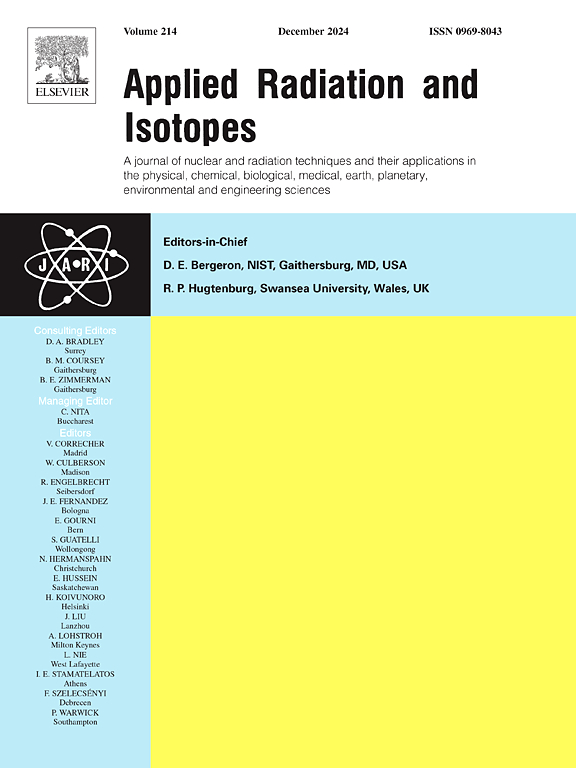Characteristic comparison between two different neutron spectrometers for boron neutron capture therapy irradiation field developed at Heavy Water Neutron Irradiation Facility of Kyoto University Research Reactor
IF 1.6
3区 工程技术
Q3 CHEMISTRY, INORGANIC & NUCLEAR
引用次数: 0
Abstract
The neutron energy spectrum at the beam port has been measured at many boron neutron capture therapy (BNCT) facilities worldwide. At Heavy Water Neutron Irradiation Facility of Kyoto University Research Reactor (KUR-HWNIF), two types of neutron spectrometers—the Simple Multilayer Spectrometer (SMS) and the Cylindrical Hemisphere-Accurate Remote Multilayer Spectrometer (CHARMS)—were recently developed to measure the neutron energy spectrum. This paper investigates the characteristics of each neutron spectrometer in measuring the neutron energy spectrum at BNCT irradiation field, with a focus on their dependence on the angular distribution of the incident neutron beam. Additionally, an overview of the CHARMS prototype designed to verify online and remote operation from outside the irradiation room is provided.
京都大学研究堆重水中子辐照设施开发的用于硼中子俘获治疗辐照场的两种不同中子谱仪的特性比较
本文章由计算机程序翻译,如有差异,请以英文原文为准。
求助全文
约1分钟内获得全文
求助全文
来源期刊

Applied Radiation and Isotopes
工程技术-核科学技术
CiteScore
3.00
自引率
12.50%
发文量
406
审稿时长
13.5 months
期刊介绍:
Applied Radiation and Isotopes provides a high quality medium for the publication of substantial, original and scientific and technological papers on the development and peaceful application of nuclear, radiation and radionuclide techniques in chemistry, physics, biochemistry, biology, medicine, security, engineering and in the earth, planetary and environmental sciences, all including dosimetry. Nuclear techniques are defined in the broadest sense and both experimental and theoretical papers are welcome. They include the development and use of α- and β-particles, X-rays and γ-rays, neutrons and other nuclear particles and radiations from all sources, including radionuclides, synchrotron sources, cyclotrons and reactors and from the natural environment.
The journal aims to publish papers with significance to an international audience, containing substantial novelty and scientific impact. The Editors reserve the rights to reject, with or without external review, papers that do not meet these criteria.
Papers dealing with radiation processing, i.e., where radiation is used to bring about a biological, chemical or physical change in a material, should be directed to our sister journal Radiation Physics and Chemistry.
 求助内容:
求助内容: 应助结果提醒方式:
应助结果提醒方式:


